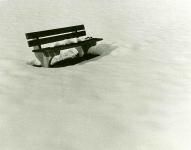|
Photo Materials Company Trokonet N° 1 |
Manufactured or assembled in USA from (Circa) 1893 to (After) 1895.
Index of rarity in France: Rare (among non-specialized garage sales)
Inventory number: 1810
See the complete technical specifications
Chronology of cameras Photo Materials Company
It seems that externally, the Trokonet does not have any remarkable features compared to other detective cameras, and the difference lies in the loading method of the sensitive surfaces.
Model No. 1 uses 8.5 x 8.5 cm films, while Model No. 2 allows for the use of 12 x 15 cm films or plates.
In the absence of an illustration, here is a description:
Bulletin de la Société Française de Photographie 1895 (French Society of Photography)
The Trokonet, an American detective camera with a magazine, using cut films or plates.
By Mr. F.-M. Richard.
Communication made at the meeting on December 7, 1894.
It is a well-known and undeniable fact that cut films, sized to regular photographic dimensions, are superior to roll films. The latter undoubtedly present greater manufacturing difficulties, and while specialized manufacturers provide the former to amateurs with almost equal quality to the best brands' plates, they cannot guarantee the same level of quality for the latter when they are in rolls of several meters. I hope a more qualified person than myself will address this issue someday for our collective education. I can only state the fact and have mentioned it only to explain the current interest in photographic cameras using cut films, due to their lightness and the number of shots that can be easily transported.
The Trokonet is a camera of this kind. It presents itself in the form of the traditional detective camera, covered in leather. The lens is a fast symmetrical double rectilinear; the shutter can do both timed exposures and instant snapshots manually, and although the mechanism is somewhat different from known ones, it does not present anything absolutely remarkable. It can simply be said that all these components are well-made and provide excellent results.
The great originality of the Trokonet lies in the magazine for the sensitive plates and in the films themselves.
These are delivered each mounted against a thick black cardboard on which they are fixed (by means of a folded metal strip). They are therefore perfectly flat, opaque, and solid. They have notches on two opposite sides, the role of which we will see later. They are sold in packs of 30 in a box, and to place them in the detective camera, you just need to put the pack in the magazine without needing metal plate holders. You cut the string of the pack in the darkroom, unfold and remove the packaging, and simply place the 30 films in a compartment of the camera. You close it, make the exposure in the usual way, and to change the exposed plate, you turn a key similar to that of a roll holder. The exposed film is removed from its compartment and placed in another.
This movement of the exposed film is done as follows:
The film compartment being facing the lens, on the key I just mentioned, a sort of metal frame is mounted; the axis of the key forms the bottom of this frame and has two latches. The magazine holds the films by means of four metal clips; but each film itself has four notches, so it is sufficient to slide it individually and move it about 5 mm so that, the notches aligning with the clips, the film is free to leave the magazine.
The operation then proceeds as follows: when the plate is exposed, by turning the key, the two latches lift the film which is released from the magazine, but is pinched in the rectangular frame mounted on the key; this frame, moved by the key, carries the film and places it in the compartment for exposed plates; upon arrival, a click releases the plate which leaves the frame. By turning the key in the opposite direction, the frame is brought back, which then grabs another film from the magazine. Each shot is thus handled like a page of a book, but not by its weight, but by the metal frame that grabs it and does not release it until it is securely placed.
When, instead of using films, you want to use plates, you must replace the former with tin holders with the necessary notches for release; these holders receive gelatin-bromide plates and the general operation is exactly the same.
The Trokonet is certainly one of the most ingenious cameras we have seen, in terms of the magazine system and the handling of exposed shots. It is reasonably priced and takes a very honorable place among the many detective cameras in use today.

Interesting links or bibliography :
Add a link or element of bibliography, a picture taken with this camera, a picture of box or an ads about this camera
Your photos taken with the same camera:
Cameras from Ebay France (Photo Materials Company) (Uploaded each 3 hours)







